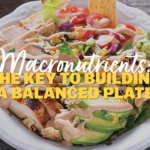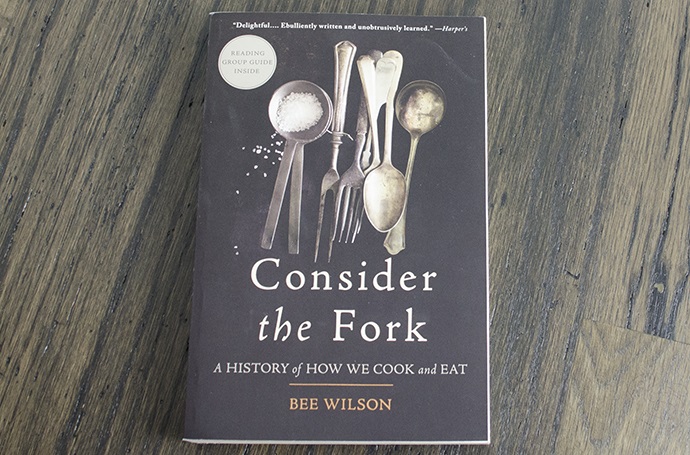Food writer Bee Wilson’s 2012 Consider the Fork: A History of How We Cook and Eat is a playful, fact-packed, and unabashedly scholarly narrative about the evolution of our culinary tools. Feminist by subject and presentation, the text is unafraid to find interest in the domestic and traditionally female task of preparing food.
Wilson begins by reminding us that “every age has its technology.” Stone or sous vide, every new invention enables another, creating new problems to be overcome and new technology to be improved upon. She leads us to examine what our tools say about our humanity—the combination of luck, thought, effort, and skill that’s brought us to the modern day.
Consider the Fork explores eight overarching technological advances, one per chapter:
- In kitchens littered with Pots and Pans, it’s easy to forget how hard it would be to cook anything without them. This chapter reminds us that our ability to cook something outside of its own vessel (like a turtle in its shell) was revolutionary, allowing us to boil, braise, simmer, sauté, and otherwise alter various foods’ texture, flavor, and nutritional accessibility in ways previously unknown.
- Knives are well-known as chefs’ favorite tools. This chapter explores how dangerous tableside daggers became specialized kitchen utensils, each with its own design and use.
- Fire discusses the journey from flame to spits, ovens, and then microwaves. The chapter focuses on how each step made cooking safer, faster, and less hands-on, freeing up time and attention for other things.
- Measurement is something we take for granted, but this chapter demonstrates how a common system of measure enables people to write—and follow—replicable recipes. You’ll be surprised by just how vague recipes used to be!
- The phrase, “What a Grind!” exists for a reason. Whether you’re working with a stone or a mortar and pestle, grinding herbs, spices, vegetables, and meats is an exhausting, laborious process. This chapter shows how the microplane grater and food processor not only enabled a consistent product, but also freed up hours of time and kilojoules of energy for the women who once had to grind their ingredients by hand.
- You can certainly Eat with your hands, but spoons, forks, and chopsticks make it easier. They also bring with them social norms and expectations of etiquette—some of which this chapter delves into.
- Ice has given us many wonderful things—cool drinks, ice cream, iceboxes, and freezers. But have you ever thought about how ice has changed the texture and flavor of the foods we eat by allowing us to move towards fresh produce and meats rather than pickled, salted, sugared, and jammed versions?
- The Kitchen has become safer over the years, and is now more of a place to experiment with new recipes or whip up a quick dinner than to slave away all day. This chapter addresses the place where our culinary tools come together to make a meal, and how its design affects the people who use it.
This structure is punctuated by chapter capstones that highlight a particularly unusual invention—from the egg timer to the toaster—and a bevy of interesting factoids derived from impressive primary sources as well as interviews with modern chefs, historians, and reenactors. In “Knives,” for example, we learn that everyone in medieval Europe has his or her own sharp, dagger-like knife, so people would bring their own blades to the table. Eventually, a desire to move away from the idea of violence or threat during a meal led to our helpless modern-day butter knives. In “Eat,” we learn that using someone’s personal chopsticks is considered as disgusting as using his toothbrush in Japan—which is part of why the disposable chopstick industry is so prevalent. Unexpectedly, the majority of those disposable chopsticks are made from sweet gum trees in the state of Georgia and shipped all the way to Japan!
Though Wilson carries us through a chronological world over ever-improving tools, she reminds us that, “In the kitchens we actually inhabit, old and new technologies overlap and coexist.” Equally at home in your kitchen are your great-grandmother’s ice-cream scoop, your dad’s manual can-opener, the potholder your daughter wove at camp, and the food processor you bought last year for your birthday. We keep these things around not only because they’re useful, but also because they hold memories—both personal and for human culture at large.
Willson’s joyful technological enthusiasm is warm without being naïve, and her sense of wonderment at human innovation is contagious. You won’t be disappointed with this as your summer read!







